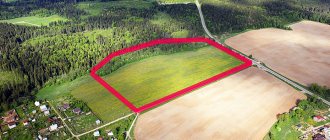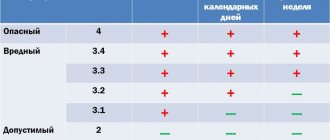Price functions
Price functions in a market economy:
- Accounting. Price allows you to take into account and measure labor costs.
- Informational. Price is the most important information about the state of the market for a product when making decisions about the volume of production, type and quality of goods.
- Balancing. Price matches supply and demand.
- Stimulating. High prices are an incentive to produce the most needed goods.
- Distribution. Changing and regulating prices makes it possible to distribute and redistribute material and financial resources.
Types of prices
The following types of prices are distinguished.
By volume of goods sales:
- wholesale (their varieties: purchasing for agricultural products and tariffs for electricity, transportation, etc.). These are the prices of consignments of goods sold between enterprises;
- retail. They are used to sell goods on the consumer market.
By method of formation: state; contractual; free.
By stability over time: fixed; flexible; floating.
In relation to the state of the market: equilibrium, dumping.
In addition, prices are distinguished: world, quoted, optimal, etc.
Price formation
Prices are formed taking into account the fact that they must cover all costs, as well as provide the manufacturer with a certain (normal) profit.
The price of products may include indirect taxes: value added tax and excise duty, which are set either as a percentage of the taxable amount or as a fixed amount per unit of goods.
As the product moves from the manufacturer to the consumer, each of the intermediaries (sales and trading organizations) makes its own markup, increasing the price by their costs and profits.
Sometimes a sales tax is imposed (eg 5% of the retail price). The price of the product for the buyer increases accordingly.
Price calculation procedure. 1) Determination of pricing objectives taking into account the goals of the enterprise (survival, profit maximization, consolidation in the market, gaining market leadership, etc.); 2) Assessment of demand for the product (current and projected for the future); 3) Cost calculation. 4) Analysis of prices of competitors' goods; 5) Choosing a pricing method (costs + profit margin; ensuring the desired profit; the method of perceived value of the product; using current prices of analogues, etc.). 6) Determination of the final price (taking into account psychology, quality, prestige, etc.).
The minimum price level is determined by the manufacturer using a cost mechanism, and the maximum by the consumer in accordance with the need for the product. When producing a completely new type of product, the initial price is set using a cost mechanism. It is then adjusted by the market mechanism, which is discussed below.
The price system is very complex; let us first consider their classification depending on the stages of product distribution:
- enterprise - wholesale trade;
- wholesale trade retail trade;
- retail-consumer.
According to these stages, there are three main types of prices:
- wholesale prices of enterprises (selling prices);
- wholesale prices of industry (trade);
- retail prices.
Note 1: Each subsequent price type includes the previous type as a component.
Note 2: The state, by introducing indirect taxes, increases the price, and to reduce it, subsidies from the state budget.
The wholesale price of the enterprise is the price at which the goods leave the enterprise. It consists of the cost of goods and the profit of the enterprise.
The industrial wholesale price is a price that includes, in addition to cost and profit, a supply and sales discount.
A supply and distribution discount is the price of a supply and distribution service. It makes it possible to reimburse the costs of supply and sales organizations (wholesale trade organizations) and give these organizations a profit.
Retail price is the price at which the product reaches the end consumer, i.e. price that completes the pricing process. It differs from the industrial wholesale price by the amount of the trade discount.
A trade discount is the price for the service of selling goods to the end consumer. It should provide compensation for trade costs (1st part of the discount) and provide profit (2nd part of the discount).
Tatarova A.V. Real estate valuation and property managementTutorial. Taganrog: TRTU Publishing House, 2003. Previous
| Table of contents | Next |
2. Real estate valuation
2.7. Land valuation methods
Normative method
is to determine the standard price of land. It is used when transferring, purchasing land into ownership, establishing common joint (shared) ownership in excess of the free norm, transferring by inheritance or donation, obtaining a secured loan, withdrawal for state or public needs.
Urban lands are assessed taking into account the density of development, the prestige of the area, the nature of the surrounding land use, environmental conditions, engineering and transport facilities, etc. The lands are divided into zones differentiated by the basic rates of land tax and the standard price of land (Law of the Russian Federation “On Payment for Land”) . The standard price of land is fixed in the Land Cadastre.
The basis for determining the standard price of land: land tax rates and increasing coefficients, land tax benefits are not taken into account.
It is often necessary to evaluate an object consisting of a building and a land plot, when the latter has only lease rights. In this case, the cost of allocating a land plot for construction can be taken into account as the cost of land.
In market conditions, if the necessary information is available, it is advisable to use methods based on the analysis of market data. The Order of the Ministry of Property of Russia dated March 7, 2002 No. 568-r approved the Methodological Recommendations for determining the market value of land plots. As a rule, when assessing the market value of land plots, the sales comparison method, the allocation method, the land rent capitalization method, the distribution method, the residual method, and the method of dividing into plots are used.
Sales comparison method
is the simplest and most effective valuation method, can be used to evaluate both actually vacant and supposedly vacant land; allows you to determine the specific price of a land plot by making percentage adjustments to the sales prices of analogues. In the absence of information on the prices of transactions with land plots, it is allowed to use supply (demand) prices.
Commonly accepted comparison elements for land plots: ownership, financing conditions, special conditions of sale, market conditions (change over time), location (distance from the city and roads, environmental characteristics), zoning conditions, physical characteristics (size, shape and depth of the plot, angular location, soil type, topography), available utilities, economic characteristics, best and most efficient use. When valuing land, you can use multiple units of comparison, adjusting the price of each and ending up with multiple values that define a range of values. Urban lands represent a special category; their value is influenced by the size of the city and its production and economic potential, the level of development of engineering and social infrastructure, regional natural, environmental and other factors.
The method gives fairly accurate results only in a developed information-open competitive market. The Russian land market does not meet these requirements; the value of a land plot cannot be determined based on information about sales transactions of analogue plots. Therefore, the assessment must collect all available information to apply all site assessment methods.
Ground rent capitalization method
is based on the fact that if there is sufficient information on rental rates for land plots, it is possible to determine the value of these plots as the current value of future income in the form of rent for the land plot being assessed. Within the framework of this method, the value of land rent can be calculated as income from leasing a land plot under the conditions prevailing in the land market. As a regular income stream, land rents can be capitalized into value by dividing by the land capitalization rate determined from market analysis. The initial data for capitalization is obtained from a comparison of sales of leased land and rental values.
Based on the rental rate received, the market value of the site is determined using the income approach, usually using the direct capitalization method. The formula for calculating the cost of a land plot has the form
,
where VL is the cost of the land plot,
IL – income from land ownership,
RL: – capitalization rate for land.
The capitalization rate is determined by dividing the value of ground rent for similar land plots by their sale price or by increasing the risk-free rate of return on capital by the amount of the risk premium associated with investing capital in the land plot being assessed.
The main factors influencing the rental rate of a land plot: location characteristics, size, shape, surrounding type of land use, transport accessibility, engineering equipment.
However, in Russia, state and municipal lands are mainly leased, and the rent is calculated in accordance with the standard price of land, which is not equivalent to its market value. Currently, attempts are being made to lease land at its market value, but it is too early to talk about the objectivity of the results of the practical application of the land rent capitalization method.
Distribution method
(method of ratio, correlation,
allocation ) -
determination of the component of the cost of a land plot based on the known ratio of the cost of land and improvements in the property complex. The method is based on the principle of contribution and the assertion that for each type of property there is a normal relationship between the value of land and buildings. This ratio is most reliable for new buildings; they are close to the best and most efficient use option. The older the buildings, the greater the ratio of land value to total property value.
To apply the method, reliable statistical data is required on the relationship between the values of land and all property of a particular type of real estate in a given market. However, the method is rarely used even in developed markets, as it has low reliability. The use of the method is justified in conditions of insufficient information on land sales. The resulting values are considered approximate.
Isolation (extraction) method
is used to evaluate built-up land plots if there is information on transaction prices for similar real estate objects. Improvements to the land correspond to its most efficient use. The method involves the following sequence of actions:
– determination of elements for comparison of objects; – determination of the differences between each analogue and the object of evaluation; – calculation and making adjustments for each of the comparison elements; – calculation of the market value of a single property, including the land plot being assessed, by means of a reasonable generalization of the adjusted prices of analogues; – calculation of the replacement cost or cost of reproduction of improvements to the assessed land plot; – calculation of the market value of the assessed land plot by subtracting from the market value of a single real estate object, including the assessed land plot, the cost of replacement or the cost of reproduction of improvements to the land plot.
The allocation method is used when the contribution of improvements to the total price of the plot is small, it is recommended for evaluating suburban areas (for which the contribution of improvements is small and is quite easily determined), and is used in the absence of data on sales of land in the surrounding area.
The method is most effective in a passive market (there is no data on the sale of vacant land plots), taking into account the characteristics of the initial information and the model for obtaining the desired value. The cost of a land plot in general is determined by the formula
,
where Сз is the cost of the land plot,
C – cost of the object,
Su – cost of improvements.
Remainder method
is based on the investment group's technique for physical components. The method is used to evaluate built-up and undeveloped plots, if it is possible to develop the assessed land plot with income-generating improvements. The value of land is determined by capitalizing the portion of income attributable to the land.
To determine the value of a plot of land, it is necessary to know the cost of the building, the net operating income of the entire property, and the capitalization rates for the land and for the buildings.
The main steps of the residual method for land:
1) the net operating income of the entire property is determined based on market rent and estimated operating expenses;
2) the net operating income related to the structure (building) is determined;
3) net operating income attributable to the land plot is capitalized into the value indicator through the capitalization rate for the land.
It is difficult to predict income in conditions of insufficient economic stability.
Subdivision method
(development approach) is used in assessing land suitable for subdivision into individual plots. Consists of the following steps:
– determination of the size and number of individual plots; – calculation of the cost of developed plots using the comparable sales comparison method; – calculation of costs and development schedule, expected period of sale and reasonable business profit; – deduction of all development costs and business profits from the estimated total sale price of the plots to determine the net proceeds from the sale of real estate after completion of development and sale of individual plots; – selection of a discount rate that reflects the risk associated with the period of expected development and sale.
Land development costs usually include:
– expenses for laying out, clearing and grading sites; – expenses for the construction of roads, sidewalks, utility networks, drainage; – taxes, insurance, engineering fees; – marketing expenses; – profit and overhead costs of the contractor, etc.
In general, modeling the market value of land plots is carried out within the framework of the assumption that dynamic equilibrium has been achieved in the competition of various “rational” land users for the right to occupy a certain plot. With the balance of effective demand and supply on the simulated land market and limited supply, the issue of the most effective use of the site as free and taking into account the existing development is resolved. Modeling of potential rental income for various types of land use is based on the patterns of formation of rental effects of location and prevailing prices (sales and rentals). Considering the significant difference in cost indicators for plots located along the front of the city’s road network and located in intra-block areas, these plots are subject to mandatory division during assessment. The implementation of the principle of the most effective use occurs in conditions of competition for the use of real estate between various functional segments of the market, taking into account real restrictions on the volume of demand and the possible multifunctionality of the territory, as a result of which a set of land users is formed on each site.
| Previous | Table of contents | Next |
Material provided by the site AUP.Ru (Electronic library of economic and business literature)
Similar materials: Methods for estimating parameters Methods for carrying out financial activities (Batychko V.T., 2009) Methods for organizing material flow management Methods for assessing logistics costs and ways to optimize them Methods for assessing logistics costs and ways to optimize them (Alesinskaya T.V.) Methods for scientific assessment - technical effectiveness of research work
Types of prices
- The “world price” should be understood as the price at which large commercial export or import transactions are carried out, which are of a regular nature and involve payments in freely convertible currency.
- Reference prices are prices published in special reference publications, catalogues, price lists, magazines, newspapers, etc. They deviate from the actual ones, because Various discounts are available.
- International commodity auction prices are prices in force on special temporarily organized public sale markets at the maximum offered price for previously inspected products.
- Exchange trading prices are the prices of a specially organized and permanently operating market of mass, qualitatively homogeneous, interchangeable goods, which are calculated and published by the quotation commission of exchanges.
- Estimated prices are average prices, i.e. the ratio of the published national and international statistical sales value of a product to its quantity.
- Prices of actual transactions (contract prices): fixed - determined at the time of signing the contract and are not subject to change during the entire period of its validity;
- movable - determined at the time of conclusion of the contract with a clause providing for its revision during the period of execution of the contract if the market price changes;
- moving - determined on the basis of the base (at the time of conclusion of the transaction) taking into account changes during the period of execution of the contract (if the production period is long - prices for raw materials change, etc.).
- the scarce market price is formed under the influence of both costly and costly factors (determinants);
This interpretation of the scarce market price is based on one of the main ideas of Marxist economic theory, according to which the market price and the market value of goods are different but similar concepts (economic forms). A product costs as much as the socially necessary labor spent on its production, and its price is determined under the influence of market prices in a competitive market environment. According to representatives of Marxist political economy, market demand and market supply, together with other factors, are the determinants that deviate the market price from its objective basis - market value. Scientists from most schools of Western economics adhere to a different view on the nature and mechanism of formation of a scarce market price. They believe that the concepts of “scarce market price” and “market value” of goods are identical, identical. The product is worth as much as the market price it has, what the buyer wants and can pay for it. The scarce market price deviates upward not from the market value of goods, but from the equilibrium market price. This is the most basic theoretical position in Western economists’ understanding of the nature of scarce market prices. Modern economists believe that scarce market prices are formed, as a rule, in conditions of conditionally full (quasi-full) or full employment of resources (material and labor) and conditionally full (quasi-full) or full (potential, maximum possible) volumes of production and market offers. The formation of a scarce market price causes demand inflation - one of the three main types of development of inflationary processes (except cost or supply inflation and monetary inflation). A scarce market price in conditions of full or quasi-full employment of material and labor resources of production contributes to the rational distribution of resources between producers. Only those buyers (consumers) who have a guarantee that in their economic sphere these resources will be used in the best (effective) way are able to pay for it. Consequently, the formation of a scarce market price helps to increase the efficiency of the national economic system.
Market value of land
According to the Land Code of the Russian Federation, the market value of land plots
determined by appraisers in accordance with the Federal Law on Valuation Activities in the Russian Federation dated July 29, 1998 No. 135-FZ, according to which the market value contains the concept of the “probable price” of the transaction, i.e. the property of its uncertainty, inseparable from the assessment process.
The assessment of the market value of land plots means the assessment of rights
arising within the framework of land legal relations, which are usually divided into two main groups:
- ownership
of land plots; - rights of ownership and use
of land plots, including: lease of land plots, permanent (indefinite) use of land plots, lifelong inheritable ownership of land plots, limited use of other people's land plots (easement), gratuitous fixed-term use of land plots.
Land market value assessment
- this service provided by our company is currently
very relevant
due to the activity of the land market and reforms of land legislation. Persons interested in reducing land taxes are especially actively seeking an assessment of the market value of land in order to challenge the cadastral value of land in a commission or in court.









